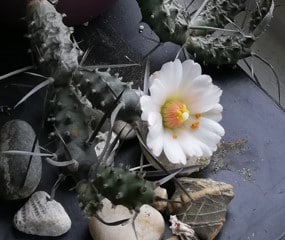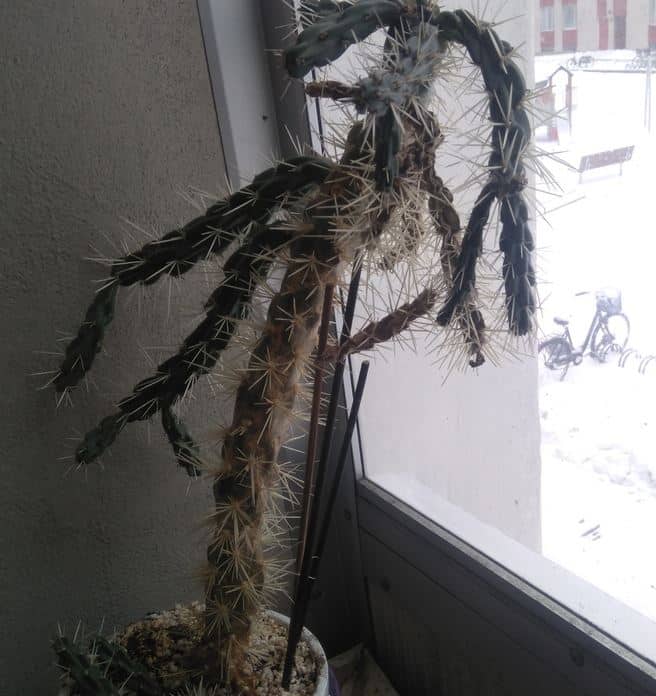
Winter dormant cactus strategy
Several types of cacti are very hardy and can tolerate temperatures well below the freezing point for many months. During late fall, when the temperature starts to fall and the watering is less frequent, lots of cacti start getting ready for a winter rest, or winter dormancy. Some cacti never really enter a deeper dormancy, while others go completely dormant for several months.
Overwinter a cactus
When cacti go dormant, they will often shrink slightly in size. If you haven’t witnessed this before, it may look like the plant may have some health issues. Although, it is a perfect behavior that confirms a healthy plant’s normal cyclical behavior.
The usually succulent plate-shaped leaves of the Opuntia will lose their firm shape and start to look weak, almost like they can’t support their own weight. The leaves will bend and look very wrinkly, almost like a raisin. It looks like a dying plant. They will look like this for several months, until the April sunlight slowly starts to wake up the plant from its deep dormancy. Within a few weeks after the first watering, the Opuntia starts to recover its normal vigorous shape and is ready for a new growing season.
This particular plant is about 6 years old, and grown from a single cutting. It lives its life on a balcony in Scandinavia, and evidently tolerates all four seasons. During the winter dormancy, roughly between November to April, it is completely dry. If you water a dormant plant below freezing point, it may be the end of it.
Even if it seems to like life, despite a very long winter dormancy, it is yet to flower. Every summer it develops several new leaves and has the appearance of a very healthy plant. Every new sign of a leaf resembles the early stages of a flower bud, but ends up becoming a leaf every time. Maybe summer 2023 is the one!
This Opuntia has been sitting in the same southwest-facing spot for 6 years. It has grown a lot and will be a challenge to move or repot. So far, it likes its habits and seems happy in the current soil.

Tephrocactus Articulatus require a winter dormancy to trigger flowering
This Tephrocactus Articulatus (image) really looked like a dead plant the previous winter. But to my surprise, it recovered nicely and flowered more than ever before the following summer. It has been indoors several winters before, without producing more than maybe one small flower. This cactus really thrives in extreme seasonal contrasts.

Cholla's first winter dormancy on a balcony
This Cholla is grown from a cutting and is five years old. The first three years it looked simply amazing. A picture-perfect cactus with perfect symmetry. However, in the last two years, some-thing happened. It started to look a bit sad for no reason at all. Repotting it didn’t help or make it worse.
Considering how the two cacti above seem to enjoy a long and cold winter rest. I decided to do the same with the Cholla. It also tolerates cold weather, but I am not entirely sure to what degree. So far this winter, it seems completely unfazed by the cold winter. It is snow outside and it looks pret-ty decent on the balcony. It has not shrunk or developed any wrinkles at all and the leaves seem to have the same texture as during the growing season. I am very curious to find out how it will react in the summer. If it will regain its healthy look from before, or even develop flowers.
To be continued…

